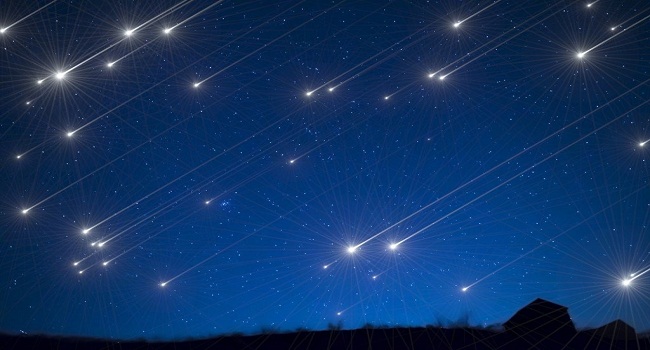Super moons, lunar eclipses, solar eclipses and spectacular meteor showers will be the highlight of the sky this year.

Comet C/2022 E3 (ZTF) taken on September 27, 2022. Photo: British Astronomical Society
The year 2023 will be highly anticipated for skywatchers with many notable astronomical events.
Most years have 12 full moons, once a month, but in 2023 there will be 13, of which 2 will take place in August (August 1 and August 30).
The second full moon in a month is called a blue moon, according to NASA. Normally, a full moon occurs every 29 days, while most calendar months last 30 or 31 days, so the months and phases of the moon don’t always align. This results in a blue moon every 2.5 years.

Two full moons in August can also be considered super moons, according to Earth Sky. Definitions of a supermoon can vary, but the term usually denotes a full moon that is brighter and closer to Earth than usual, thus appearing larger in the night sky.
Some astronomers say a supermoon occurs when the Moon is within 90% of perigee – the point closest to Earth in its orbit. By that definition, the full moon of July (July 3) would also be considered a supermoon event.
There will be two solar eclipses and two lunar eclipses in 2023. The total solar eclipse will occur on April 20, and will be visible from Australia, Southeast Asia and Antarctica.
That same day, skywatchers in Indonesia, parts of Australia, and Papua New Guinea were able to see a hybrid eclipse, an intermediate pattern between total and annular solar eclipses. According to NASA, the curvature of the Earth’s surface can cause a solar eclipse to shift between total and annular as the Moon’s shadow moves around the globe.
On October 14, an annular solar eclipse swept across the Western Hemisphere and was visible across North, Central and South America.

An annular solar eclipse observed from Tokyo, Japan on May 21, 2012. Photo: IFL Science.
Like a total solar eclipse, the Moon passes between the Sun and Earth during an annular eclipse, but it occurs when the Moon is above or closest to the point farthest from the Earth. This makes the Moon appear smaller than the Sun when viewed from the ground, so it does not completely obscure the star, but creates a bright ring around the Moon.
Be sure to wear the right glasses to watch the eclipse safely, as sunlight can be harmful to your eyes.
A lunar eclipse can only occur when the Sun, Earth, and Moon are aligned or nearly aligned, and the Moon enters the Earth’s shadow. Then, the Earth will create two types of shadows on the Moon during a lunar eclipse. The faint outer shadow is called the semi-dark, and the complete shadow is called the shadow.
The first lunar eclipse of 2023 is a penumbral lunar eclipse, which takes place on May 5 and can be observed from Africa, Asia and Australia. This phenomenon occurs when the Moon moves through the semi-dark region of the Earth’s shadow.
The next lunar eclipse is a partial lunar eclipse on October 28 and can be seen from Europe, Asia, Australia, Africa, parts of North America and much of South America. The phenomenon occurs when the Sun, Earth, and Moon are not perfectly aligned, so only part of the Moon enters the shadow.
The new year kicks off with the Quadrantid meteor shower, which is expected to peak on the night of January 3 and dawn on January 4 for observers in North America, according to the American Meteorological Association.

Quadrantid is the first of 12 meteor showers in 2023, the remaining list includes: Lyrid (April 22 – 23), Eta Aquariid (May 5 – 6), Southern Delta Aquariids (April 30 – 31) 7/7), Alpha Capricornid: (July 30 – 31), Perseids (August 12 – 13), Orionid (October 20 – 21), South Taurid (November 4 – 5), North Taurid (August 11 – 12/ 11), Leonid (November 17-18), Geminid (December 13-14), Ursid (December 21-22).
To see the best meteor shower, you should go to places not affected by light pollution and find an open area with a wide view of the sky. Give your eyes about 20 to 30 minutes to adjust to the dark, by not looking at your phone screen, light trails will be easier to spot.
Source: VNEXPRESS.








